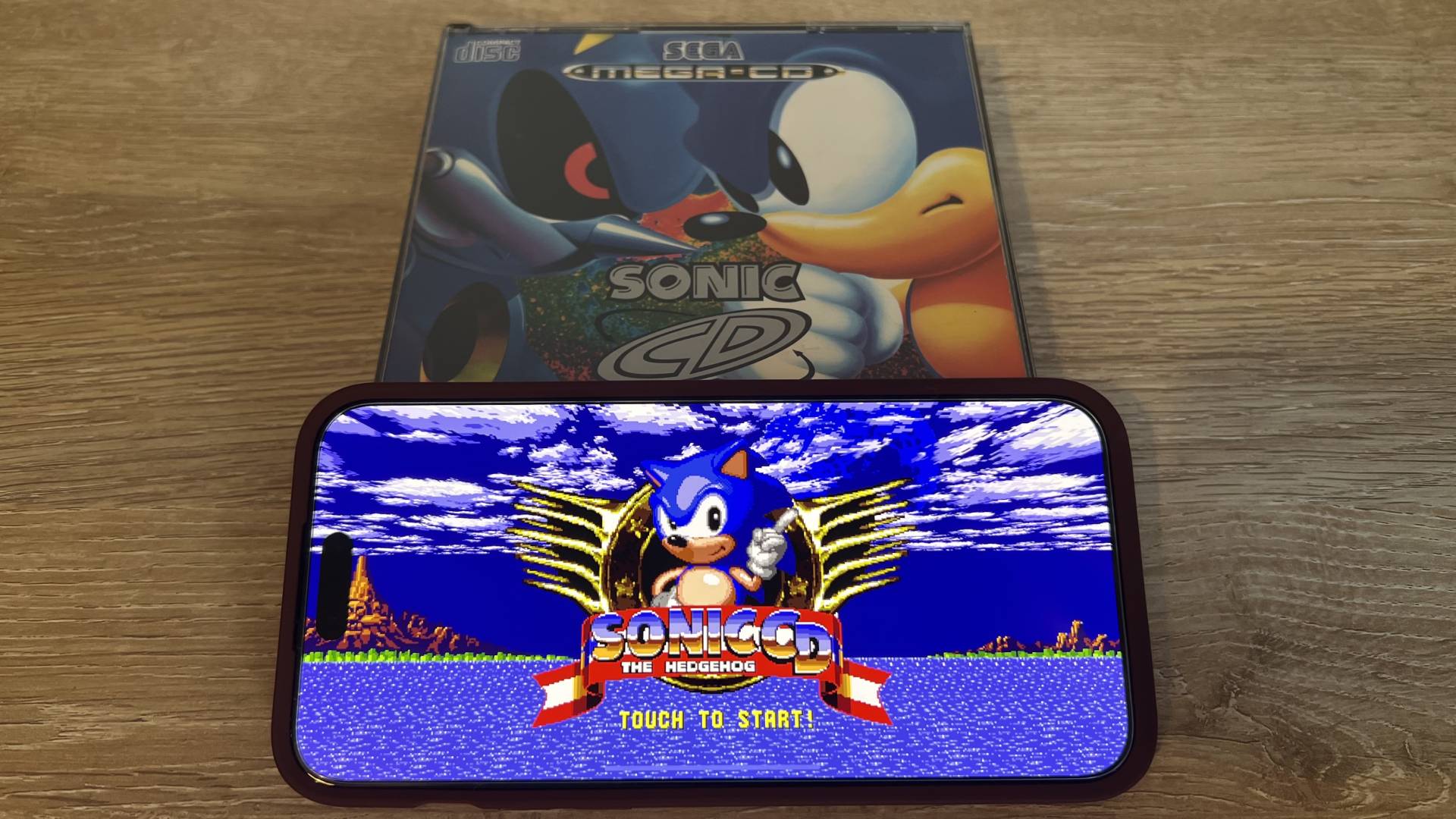
It may sound unfathomable now, but Sonic CD was once a difficult game to obtain and play, until it was made available on iPhone and iPad as a remaster, back in 2011.
For those unaware, you controlled Sonic the Hedgehog through seven levels, set on a ‘Miracle Planet’. Each of these also had extra levels set in the past and the future. By destroying a hologram of one of the game’s antagonists, called Metal Sonic, and destroying a time ship containing that level’s 'badnik' enemies, you could unlock a ‘Good Future’ for that stage.
There were also seven ‘Special Stages’, accessible by way of a giant ring after collecting 50 rings at the end of a stage. Here, you could run across a map in 360 degrees, destroying several flying UFOs to collect six of the ‘Time Stones’, which would give you the ‘Good’ ending once the game wraps up.
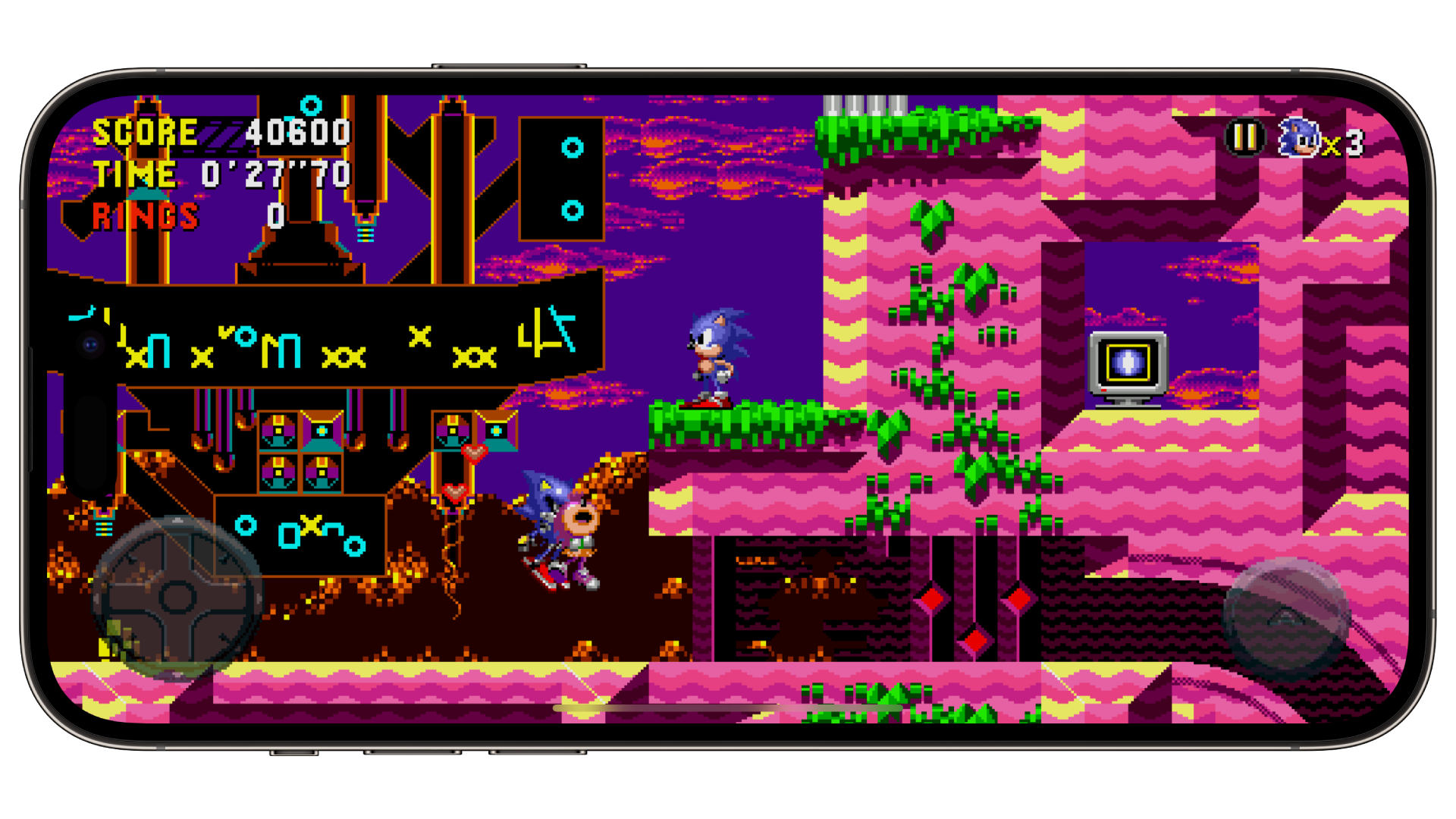
The main story was a quest to save Sonic’s girlfriend, Amy Rose, from Sonic’s doppelganger, a mechanical robot called Metal Sonic, working with Dr. Robotnik, the series’ main antagonist, who wants to collect all of the Time Stones to rule over time and space.
Combining this with an incredible soundtrack composed by Naofumi Hataya and Masafumi Ogata for the Japanese release, followed by Spencer Nilsen and David Young for the American release, Sonic CD was a huge success when it was released on September 23, 1993, for the SEGA CD, an add-on to the Mega Drive (or Genesis for USA owners). Fast forward to 2011, and a remaster was made available to iPhone, iPad, and other platforms. This re-release opened up the game to so many players who didn’t have a SEGA CD before, and it gave new players a brand new Sonic game that they were previously unaware of.
With Sonic Dream Team having arrived on Apple Arcade this month, and to mark the 30th anniversary of Sonic CD alongside its 12th year of arriving on iPhone and iPad, iMore spoke to Naoto Ohshima, the original designer of Sonic the Hedgehog and the Director of Sonic CD, alongside being one of the Producers on Sonic Superstars.
Right on time

Once the original Sonic the Hedgehog game was released in June 1991 for the Mega Drive / Genesis, SEGA wanted to create two titles — one of which was to be led by Ohshima. “After development was completed on the first Sonic the Hedgehog game, two follow-up titles were developed. One of them was Sonic 2, which was handled in America, while the other - Sonic CD - was developed in Japan to make full use of the Sega CD system.” Ohshima recalls that he wasn’t given a brief for his game, “We weren’t given any specific instructions, but I personally wanted to make use of the expanded storage of CD media and create a larger game that wouldn't fit on a cartridge.”
The fact that it wasn’t labeled as Sonic 2 perhaps eased the pressure on Ohshima and the team, as he recalls. “We weren't focused on whether or not it was a numbered sequel. While Sonic 1 was limited by the available space on the cartridge, Sonic CD didn't have that restriction, so we were free to add animated cutscenes and more stages. Though that led to many other challenges…”
To travel through time in Sonic CD, you had to run past certain signposts that were labeled ‘PAST’ or ‘FUTURE’. After maintaining some speed, you’d be brought to a cutscene where Sonic would travel back in time. For this, Ohshima drew inspiration from a certain film series. “The time travel mechanic was made possible due to the increased storage space we had available on the CD. I felt it would be neat to have past, present, and future versions of stages. I was also a fan of the movie "Back to the Future", so I wanted to have a feature that involved time travel by reaching top speed.”
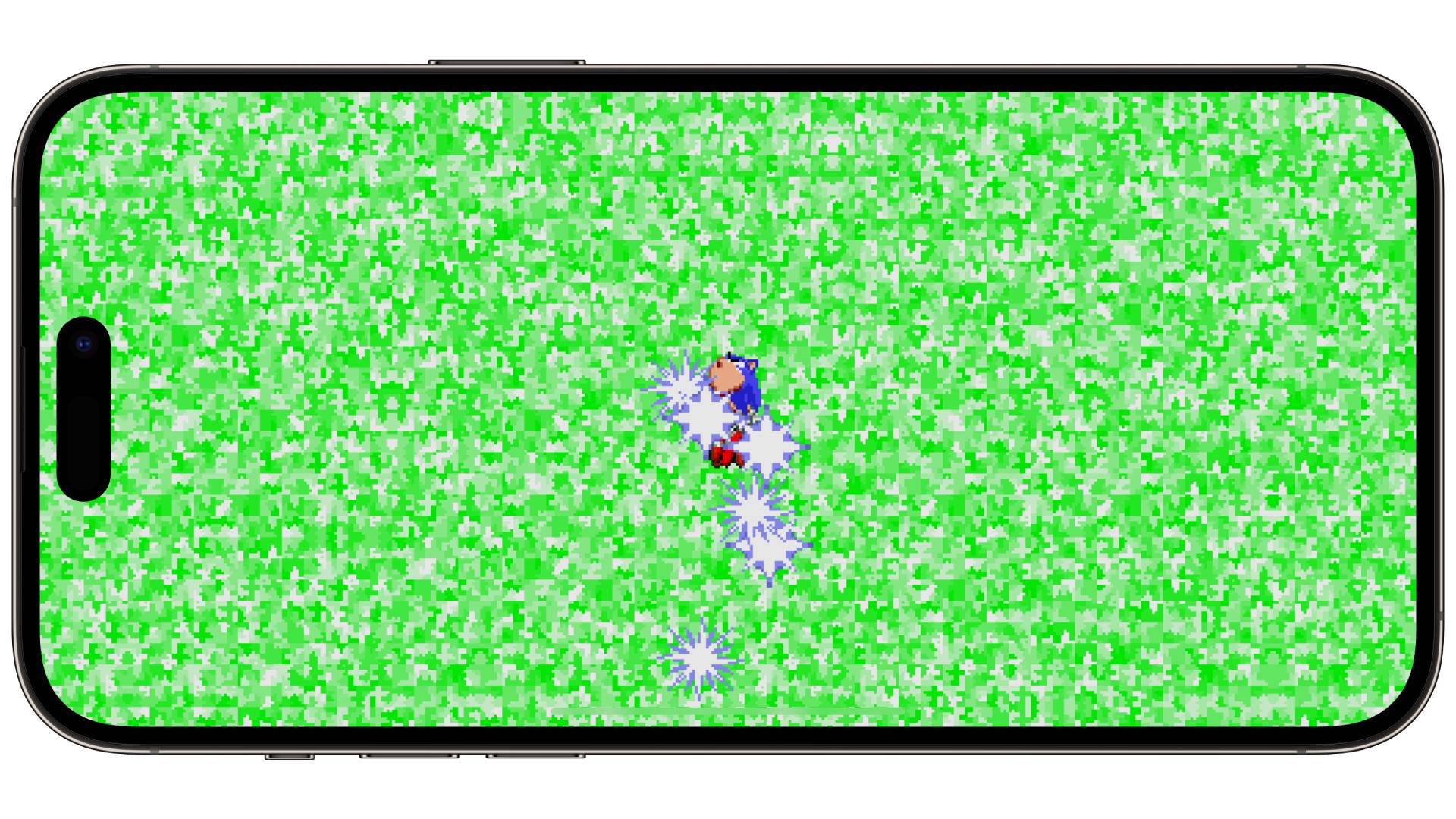
I'm actually very surprised that so many people know about that stage!
Naoto Ohshima
However, this meant that the number of levels tripled to a whopping 70 in total. While the move from a cartridge to a CD format helped with this due to the bigger storage capacity, it gave the team a mighty challenge. “It was tough, yeah. With all the extra space we had, data storage wasn't an issue, but I didn't realize how much all that content was going to extend development time. And since the layouts of the past, present, and future versions of stages were all different, debugging took a considerable amount of time.”
It’s worth noting at this point, that the Sonic community is a passionate bunch of people. So much so, that they’ve been able to unearth a trove of discoveries from past games. For instance, Sonic 2 was meant to have many more stages than what was released. A ‘Hidden Palace’, a desert level called ‘Sand Shower’, a winter level, and lots more were cut.
This is why players have always wondered about a cut stage in Sonic CD. When you go to the level select menu in the game, every level is corresponded to a number. Palmtree Panic, for instance, being the first stage, was given ‘R1’. Collision Chaos, while being the second stage, was given ‘R3’ — making players wonder if there had been a stage that was cut from the final game.
Ohshima confirms with iMore that there was indeed an ‘R2’ stage, but it wasn’t to be. “I hear that a lot from fans, and so I did some digging and found an underground dungeon stage that showed up in an early draft. We scrapped it early on because we felt that it didn't fit Sonic's style of gameplay,” Ohshima reveals. “And because we didn't really create any concrete ideas for the stage, nothing from it ended up in the final game. I'm actually very surprised that so many people know about that stage!”
A Rose between two sets of spikes
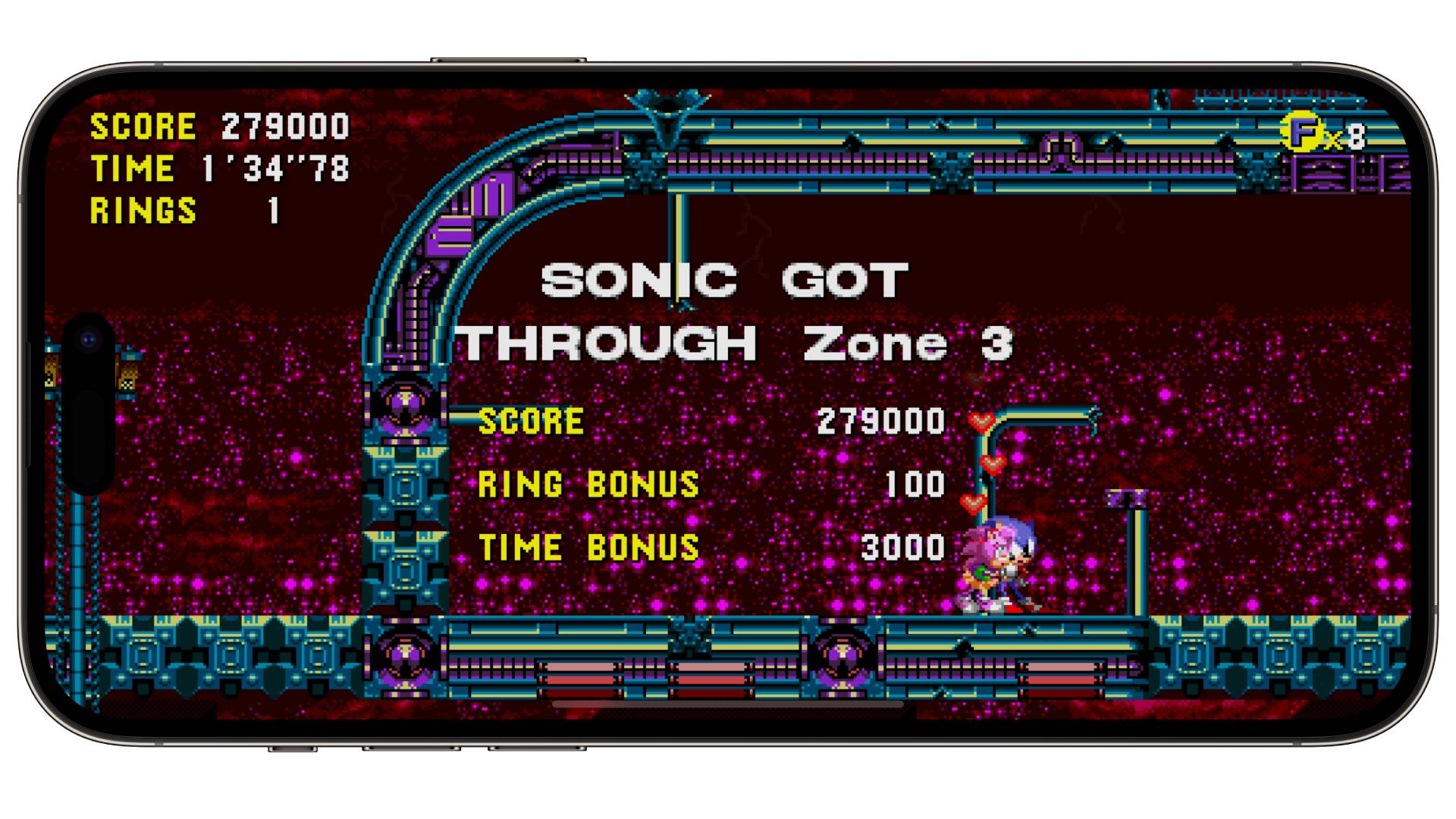
What's most fun for me is coming up with new ideas and ways to surprise players.
Naoto Ohshima
A big part of what players remember from Sonic CD are the two new characters — Amy Rose, Sonic’s girlfriend, who gets kidnapped by the second antagonist alongside Dr. Robotnik, called Metal Sonic.
This machine was angled to be Sonic’s doppelganger - just as fast but twice as deadly. You’d eventually face Metal Sonic in a tense race in the sixth stage, called Stardust Speedway, with a great soundtrack to boot.
With Sonic CD being led by Ohshima in SEGA Japan while Sonic 2 was being made overseas in SEGA America for a November 1992 release, both teams had no idea of new characters being designed for both games. This meant that Ohshima had no idea about Miles ‘Tails’ Prower, Sonic’s twin-tailed sidekick in Sonic 2. “Since Sonic 2 was developed in America, we had no idea Tails even existed while we were working on Sonic CD,” Ohshima remembers. “But we felt the series needed a female character and a strong enemy for Sonic to fight on his new adventure, so we came up with Amy and Metal Sonic early in development. I remember the team really pushing for a female character as well.”
A Sonic game is more than going from the left of the stage to the right and hitting a signpost. It’s coming across the unique enemies in each stage, the objects that you need to avoid, all the while listening to the great soundtrack that has that Sonic feel — electronic with a fast, upbeat tempo. Sonic CD has all of this and more. Once the remaster of Sonic CD arrived on the iPhone in 2011 with widescreen support, the ability to play as Tails, and switching between the US and Japanese soundtrack, the game had everything a fan could want.
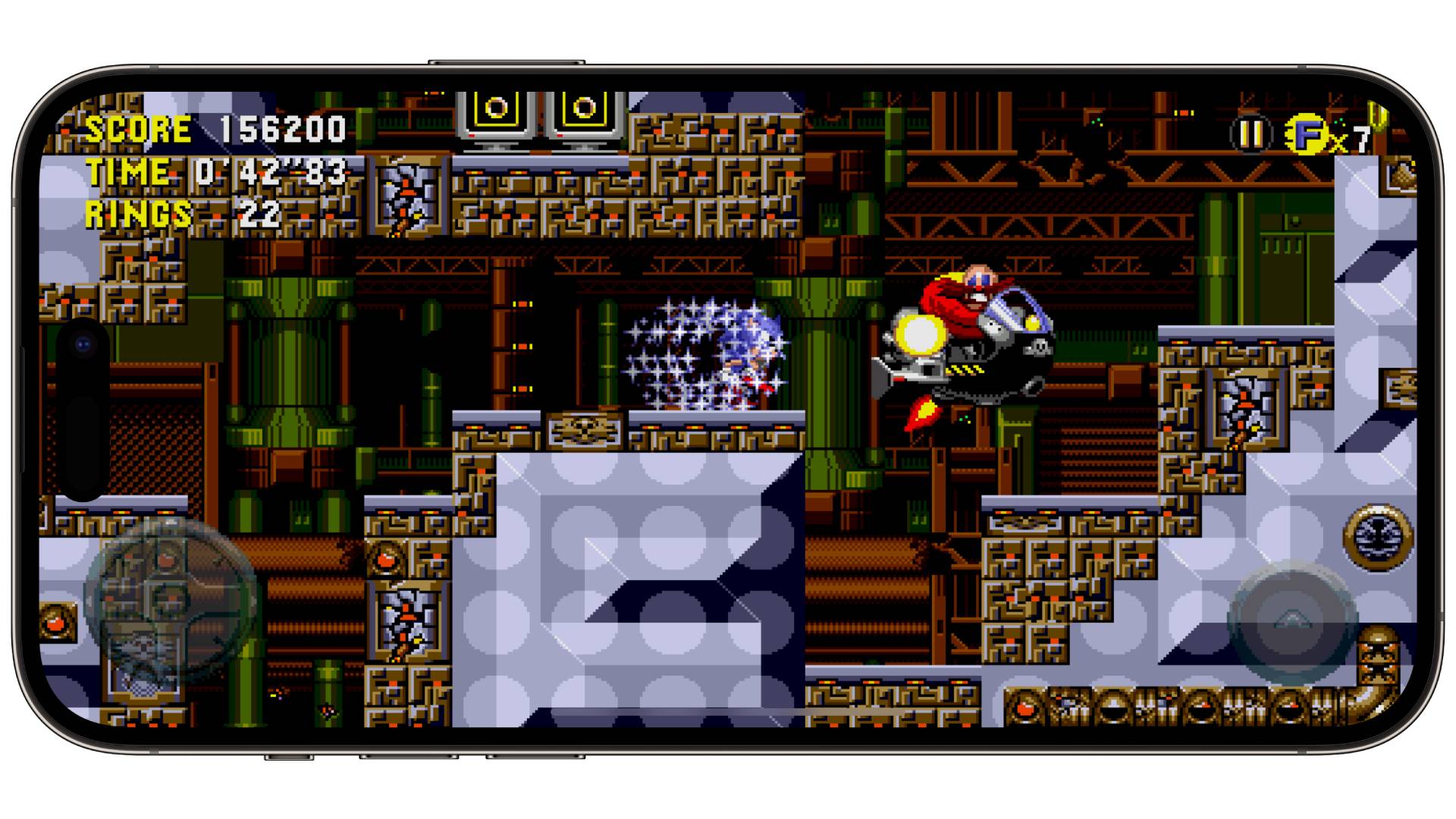
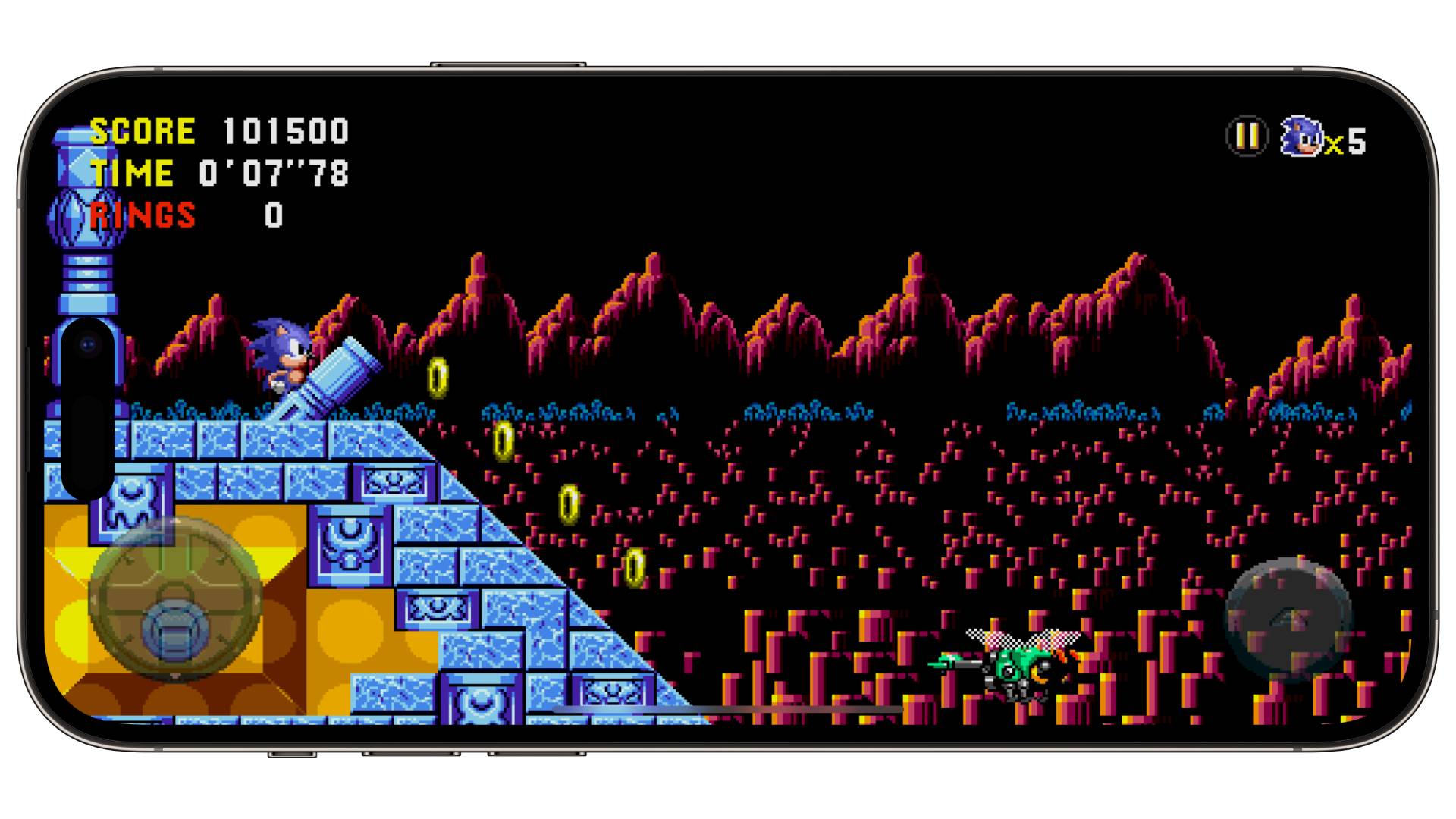

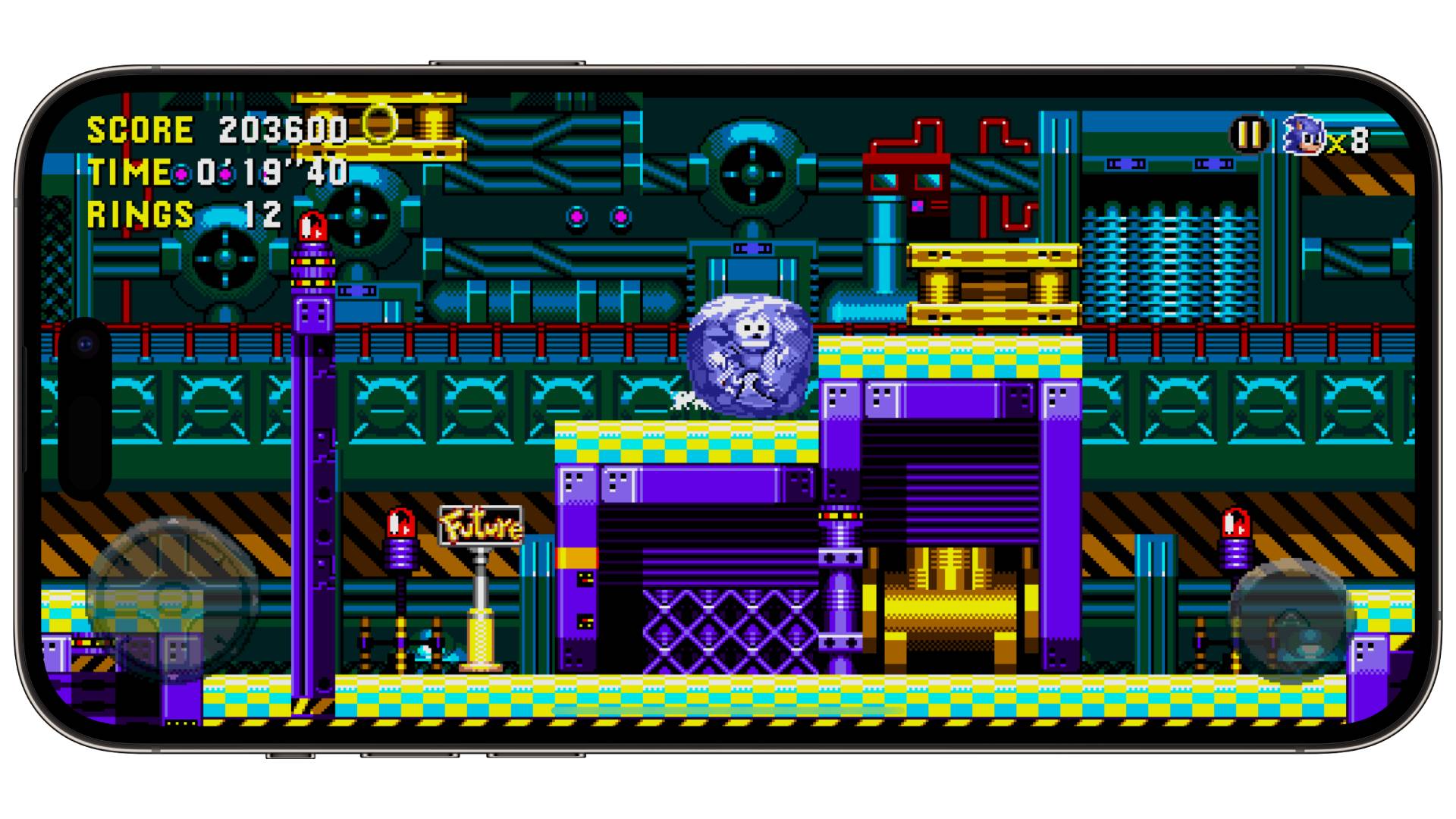

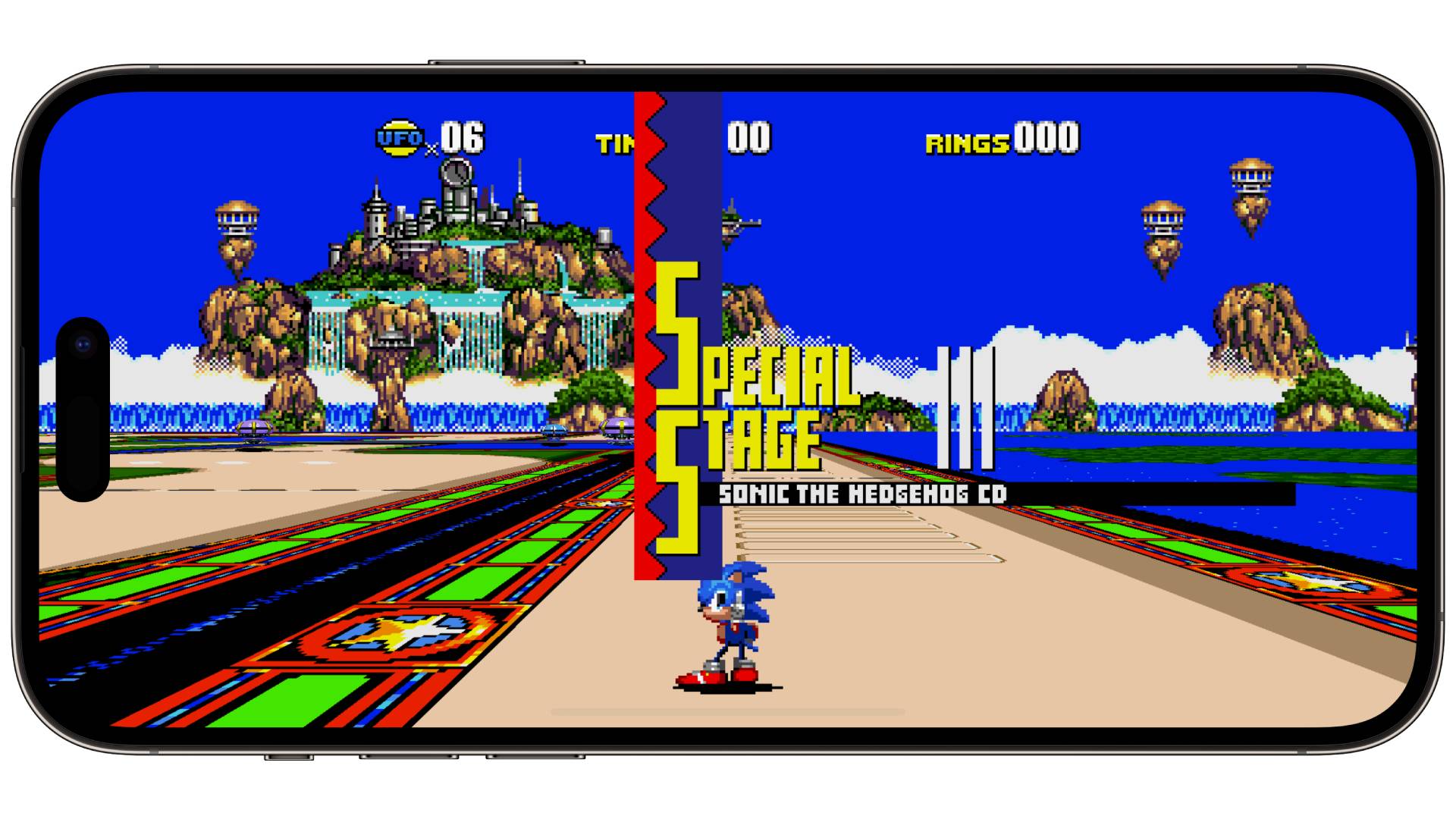

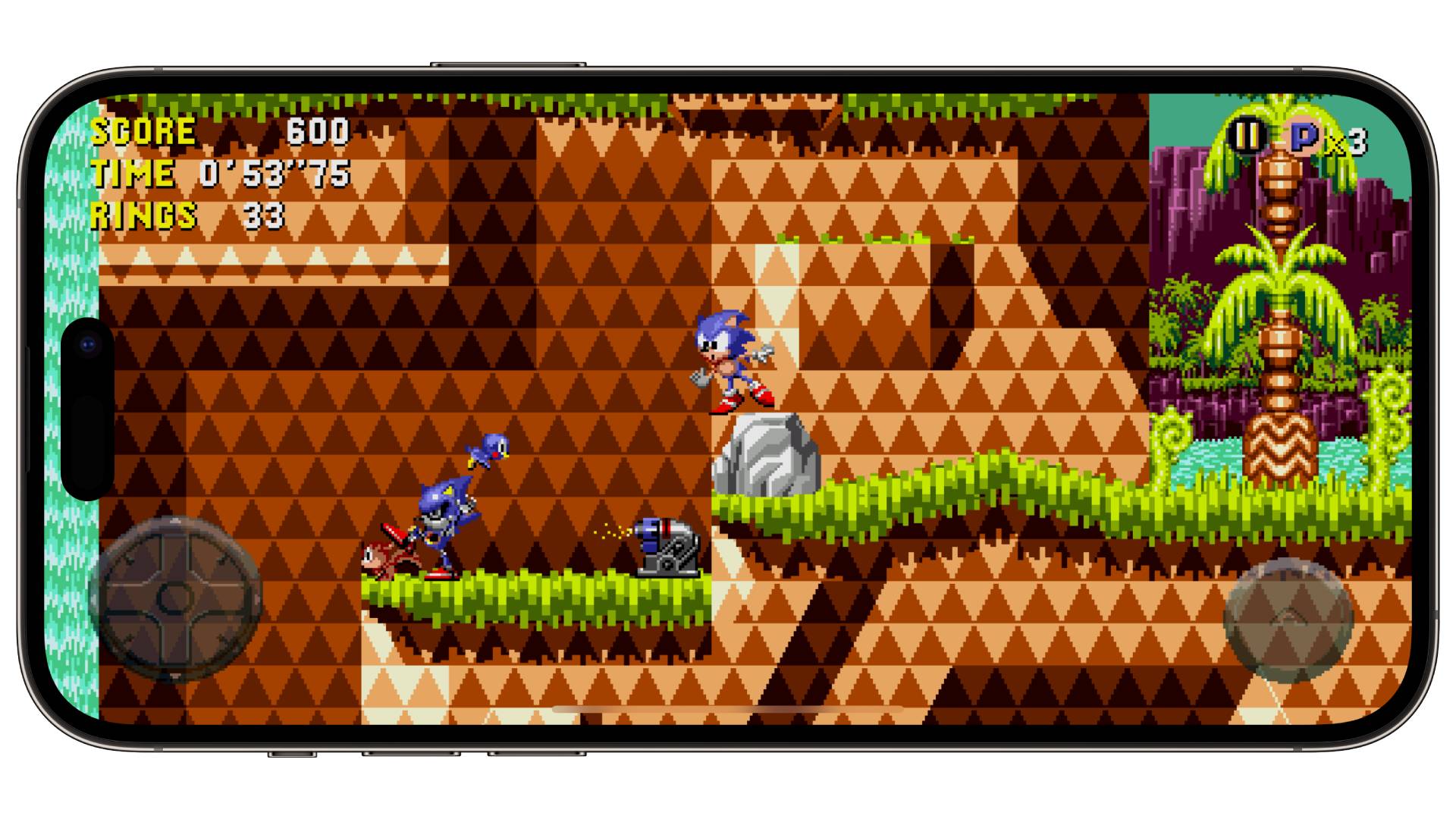

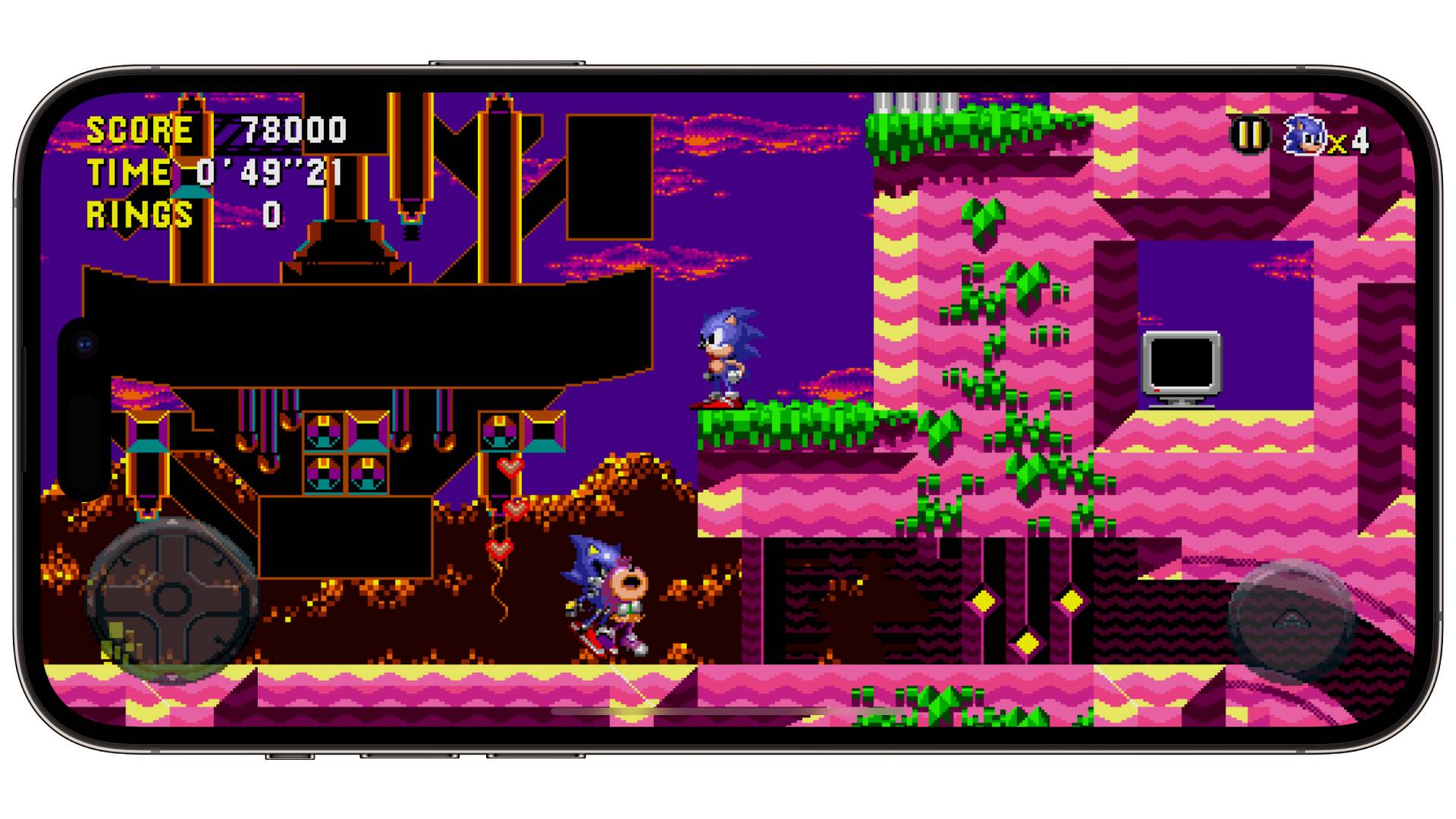
Looking back, Ohshima is fond of how Sonic CD turned out, especially on iOS. “What's most fun for me is coming up with new ideas and ways to surprise players,” Ohshima explains. “Rather than think of a game as a continuation of a series, I like to think of it as a completely new game with new characters and stories. So for me, Sonic CD isn't just a sequel, but rather a new Sonic adventure where you travel through time.”
With Sonic CD on iPhone, it was also part of the recently released Sonic Origins compilation, which includes Knuckles and Amy Rose as playable characters for the first time — Ohshima is thankful that the game is still seeing an extra life on new platforms. “Sonic CD is an old game to me, so I'm glad to hear Sonic fans are still enjoying it to this day. I never thought the game would be included in something like Sonic Origins and be playable on modern consoles. It's great to see the animated scenes from back then realized in higher resolution.”
Finally, fans have wondered if there was ever going to be a sequel to Sonic CD, but Ohshima denies considering one. “It's been decades since I left Sega, so I haven't thought about a sequel to Sonic CD. I thought I would never really work on a Sonic game again after Sonic CD, but I was very happy to come back to the series on Sonic Superstars, which was released this year.”
88 Miles Prower — 30 years on

Sonic CD is a game that I’ve always had installed on my iPhone and iPad. I’ve long thought its special stages are some of the best in any Sonic game. In other games, I always saw them as a chore. These would traditionally be required to collect the six Chaos Emeralds to become the faster and invincible Super Sonic, and some special stages would be worse than others. For instance, Sonic 2 made you collect a certain amount of rings down a tube, while Sonic 3 made you collect blue spheres on a small planet.
So replaying all eight of these in Sonic CD while on a train commute or to simply pass the time, has never gotten old for me. This also goes for the levels themselves. Playing Stardust Speedway and Metallic Madness is great fun — their design, the enemies, the bosses, and above all, the flawless music. In fact, these attributes make all of the stages, not just these two, incredibly replayable.

While we’ve already seen a new Sonic game arrive on Apple Arcade to close out 2023, Sonic CD is a perfect game to load up on your new iPhone or iPad to play over Christmas as well. Ohshima’s design of Sonic has lasted since the blue blur’s debut in 1991. You see it in every form of media that Sonic is in — including Sonic Dream Team on Apple Arcade.
Yet it’s his Sonic CD project that still makes the biggest impression on my iPhone 15 Pro Max, all these years later. From collecting the Time Stones to beating the levels in Time Attack mode, there’s plenty you can clear over the holidays.
Sonic CD is an all-time classic that exemplifies the best of Sonic from the 1990s, and it’s also a fantastic entry point for new players if they’re about to get a new Apple device for Christmas.







